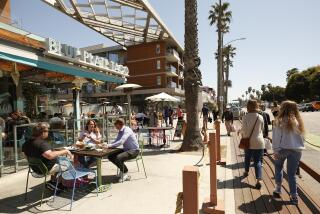Students Getting a Break on Spring Travel in the Bahamas
NASSAU, Bahamas — The Bahamas, a 700-island nation 50 miles off the coast of Florida, are gearing up to welcome students during the spring break.
Young travelers can go on vacations that not only stretch the dollar, but offer access to the local way of life.
Interested in learning more about the Bahamian culture? Try the excellent People-to-People program staffed by hundreds of Bahamians who volunteer their time.
Informal get-togethers, sometimes involving a day of sightseeing or joining a family meal, are among the possibilities.
There is no charge to visitors. Volunteers are not paid or reimbursed but do it for goodwill. The opportunity is offered to spring-break guests and year-round visitors.
Most international visitors will arrive on 21-mile New Providence island and base themselves near the capital of Nassau.
Students will find that meal and transportation expenses can be taxing unless they live like the local residents.
For example, for evening travel and transportation from the airport, taxis are the usual mode since there is no public transportation. During the day, however, it’s possible to flag down and take a ride on a local bus, called a jitney, for 75 cents.
A hamburger and soft drink at the beach-front snack stand in front of the Cable Beach Hotel will set the traveler back $10.50. Another option is to join local residents on the front porch of Travelers Rest restaurant near the airport, for a full Bahamian meal priced at $7.
Also, a journey from Nassau to the neighboring Family Islands by mail boat can be a fascinating adventure. Only about 40 of the Bahamian islands are inhabited, and the once- or twice-weekly mail boat is the main link between the major islands.
After checking the schedule posted in the Rawson Square tourist information office in Nassau, I headed to Potter’s Cay, beneath the bridge between Nassau and Paradise Island, for a 7 a.m. sailing to the island of Andros.
The docks were covered with fruits and goods, and families dropping off passengers and packages.
Our five-man crew loaded the 50-foot boat with cement mix, lumber, mail, vegetables, crates of eggs, medical supplies, a birthday cake and three passengers before shoving off for the four-hour sail.
Once at sea, the crew distributed themselves across the cargo like rag dolls, passengers visited or stretched out on berths, and from the galley came music and the smell of breakfast.
The trip cost $20 (flying is $37), and most overnight sailings average $30 to $40.
Mail boats offer an ideal setting for getting to know local residents, but this is not for those with weak stomachs.
Sailors must be flexible, weather can change departure times and it’s wise to do some research about economical accommodations close to where the boats land. There is no public transportation on the other islands, just taxis, which, again, can be expensive.
Starting in late February and continuing until early April, tourism representatives will meet and brief arriving students about spring-break activities, including free walking tours, a student-discount shopping day and evening entertainment.
Most activities for the spring-break crowd will be held in the beachfront West Esplanada area of Nassau. Twice-weekly beach parties will offer Bahamian food and music, plus volleyball, tug-of-war, limbo and basketball competitions.
For information after you arrive in Nassau, call 326-5371. For advance information on the Bahamas, contact the Bahamas Tourist Office, 3450 Wilshire Blvd., Suite 208, Los Angeles 90010, (213) 385-0033.
More to Read
Sign up for The Wild
We’ll help you find the best places to hike, bike and run, as well as the perfect silent spots for meditation and yoga.
You may occasionally receive promotional content from the Los Angeles Times.






